Joint diseases are one of the most common manifestations of musculoskeletal disorders. They develop during inflammatory, degenerative-dystrophic, infectious processes in the body, as well as as a result of trauma and congenital abnormalities.
Doctors distinguish dozens of different joint disorders with fairly similar symptoms (pain, crunch, restricted mobility). This makes diagnosis difficult and impairs timely treatment. Therefore, in this article, experts will inform you about the manifestations and developmental features of the most common joint diseases.
Features of the joints and the causes of their diseases
A joint is any connection between two or more bones. The human body has 38 pairs of joints (76 joints in total). They give our body mobility and flexibility. Movement is a vital function, and when the disease limits it, the quality of life and the lifespan decrease.
Every joint has articular surfaces - these are the surfaces of the bones that are covered with a special, hyaline cartilage. It is dense, elastic and is needed to protect the bones from abrasion when moving. It also ensures their perfect match with one another. It is the wear and tear on the cartilage that becomes a common cause of pain, crunching, stiffness, and other signs of illness in the joints.
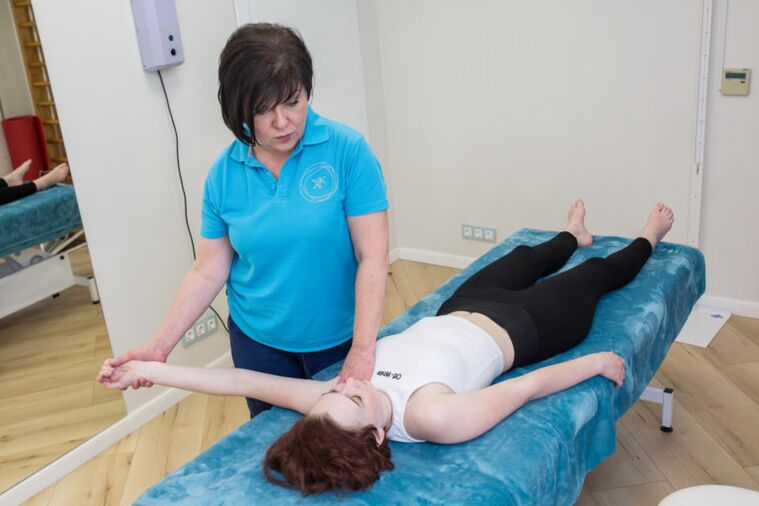
The joints are characterized by a complex structure. Joint surfaces, capsule, fissure, synovium, periarticular muscles and ligaments - all these structures fulfill motor and support functions of the joint. Their damage can provoke the development of the disease.
Causes of diseases
Many people mistakenly believe that only the elderly suffer from joint diseases due to age-related changes and weakness in the body. But that's not the case!
Joint diseases can result from:
- Injuries;
- Obesity;
- physical activity;
- wrong posture;
- Flat feet;
- hereditary predisposition;
- Foods with insufficient micronutrient content;
- Diseases of internal organs;
- Metabolic disorders;
- delegated operations;
- Infections.
People of all ages and even people in relatively good health (e. g. , men and women of working age, teenagers, children, athletes, etc. ) can be exposed to these factors.
Therefore, this group of diseases is becoming younger and younger - in terms of frequency of occurrence and disability, it ranks second after cardiovascular and endocrinological diseases, and its treatment has a high financial cost.
The mechanism of development and types of diseases
In the pathogenesis of joint damage, doctors distinguish 4 possible ways:
First: the presence of inflammation in the body
This type of lesion is characterized by a sudden onset with a rapid increase in symptoms of inflammation: swelling, pain, redness, fever. Occurs with infections, allergies, autoimmune processes in children and adults.
Juvenile arthritis
It is characterized by an autoimmune process (i. e. the body self-destructs), the cause of which is unknown. Infections transmitted, even in mild form (e. g. vaccinations), are often provocateurs.
The disease affects a large joint (knee, elbow) in children and adolescents, affects their growth and development. Joint pain is accompanied by severe swelling, reddening of the skin and fever.
Rheumatoid arthritis
Also caused by an autoimmune process with no clear cause. More often women are sick, the average age is 45-50 years. Up to 70% of the sick are disabled.
Affects a small joint (or several), for example wrists, fingers. This affects the patient's ability to work and even affects self-sufficiency. They complain of severe pain, swelling, changes in the shape of the joints and morning stiffness.
Psoriatic arthritis
In almost half of patients diagnosed with psoriasis, the inflammatory process develops in the small joints of the hands, feet and spine. The cause of the arthritis is unknown, as is the cause of the underlying disease.
Psoriatic arthritis can affect the interdigital and large joints (elbow, knee), one or more joints, symmetrical or not.
The main manifestation is the presence of pain extending to the ligaments and tendons, swelling and blue skin of the fingers, restriction of movement.
Gouty arthritis
It develops against the background of gout due to the deposition of uric acid salts in the joints. Men suffer more often than women between the ages of 40-50 and over 60 years.
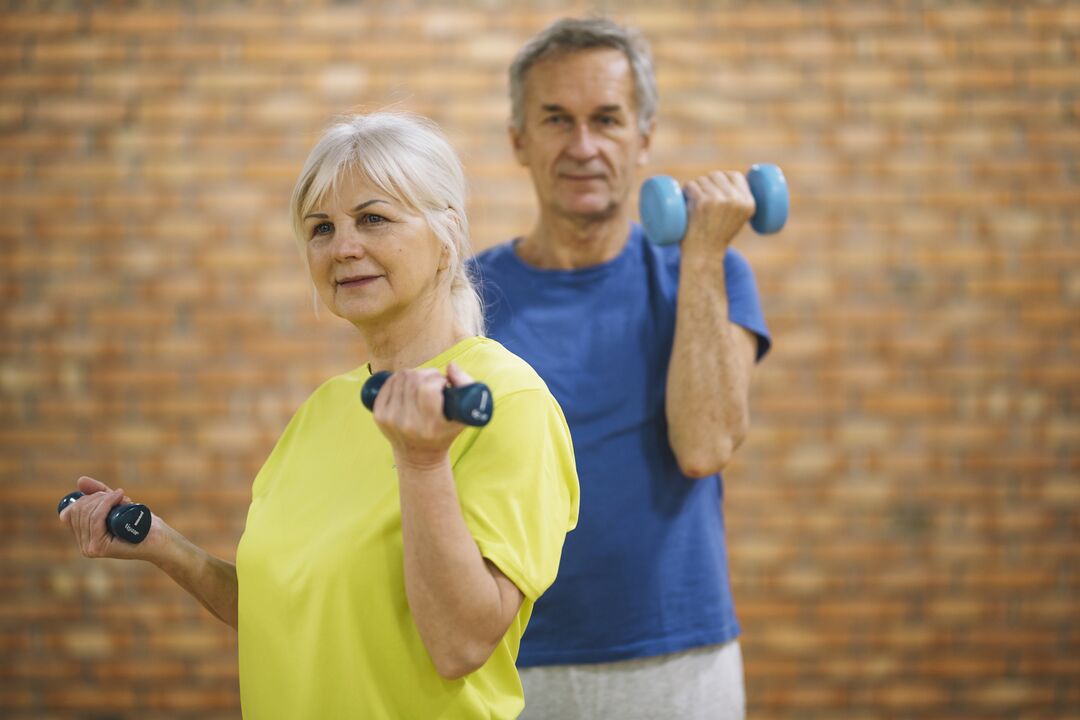
A characteristic feature is the defeat of a joint, which begins suddenly, lasts for several weeks, is accompanied by severe pain and swelling, with the formation of uric acid nodules (tofusen).
Spondyloarthritis with ankylosing spondylitis
A chronic lesion that affects the spine, paravertebral muscles, and the sacroiliac joint of the pelvis.
Men are more likely to suffer from the disease than women, and it develops between the ages of 20 and 30. Her main complaints are pain in the lower back, sacrum, hip joints; Stiffness of movement after a period of rest (especially in the morning, after sleeping).
Even with symptom relief and relative well-being without eliminating the cause, the inflammation will continue to develop and over time will lead to a new exacerbation. Therefore, joint pathology often becomes chronic and leads to disability.
Second: the presence of a degenerative-dystrophic process
With this type of lesion, physical factors destroy the joint. Injuries and microtraumas, constant physical exertion beyond the norm, harmful environmental factors (hypothermia, vibration) - all these pathological factors cause the destruction of the cartilage and the narrowing of the joint space.
Deforming osteoarthritis
It is caused by damage to and destruction of the articular cartilage. Its joint surfaces become rough and sensitive to friction. Over time, the process of destruction spreads to the bones, capsule, synovium, ligaments and muscles. Chronic inflammation and changes in the shape of the joints occur.
Osteoarthritis is the most common joint disease. It lowers the quality of life for patients, leads to disabilities and is difficult to treat. In adolescence, men are more likely to get sick, in old age - women.
Clinically, osteoarthritis manifests itself in severe pain and restricted mobility, which increase with physical exertion. In the later stages, even calm and serenity will not bring relief.
Osteochondrosis
It affects the spine and is caused by degenerative processes in the intervertebral discs. Under the influence of negative factors, the nutrition of the intervertebral discs is disturbed, which leads to loss of shape (up to the formation of protrusions and hernias), aging and destruction.
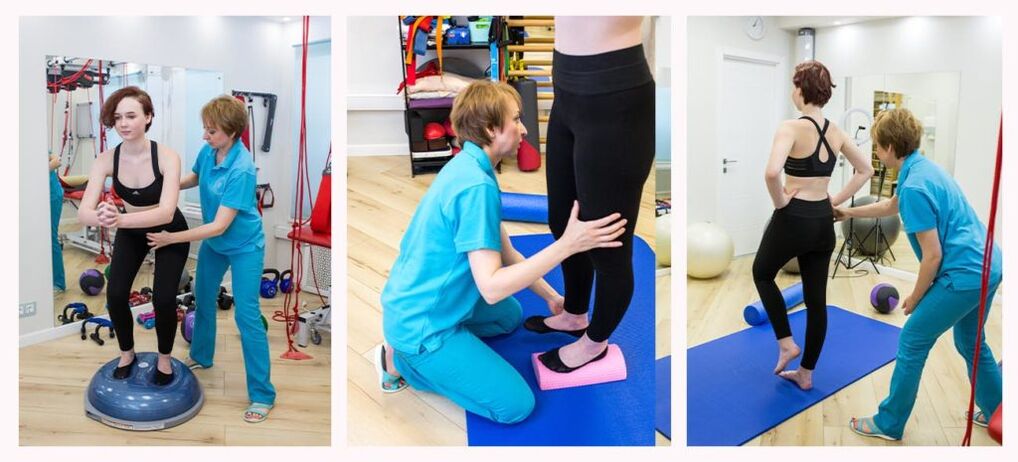
As a result, the spine loses its mobility, pain, numbness, stiffness of movement, muscle weakness, difficulty urinating and emptying the bowels, headaches and dizziness occur. Symptoms depend on the part of the spine where osteochondrosis has developed and can vary widely.
Deforming spondylarthrosis
This condition is also called "facet syndrome". In this case, the process of destruction affects the structures of the intervertebral joints (capsule, ligaments, facets).
Most often, it occurs in the most "congested" part of the spine - the lumbar spine. It manifests itself as pain that radiates into the leg and increases in one place when you walk or stand for a long time.
Osteochondropathy
Caused by aseptic (non-infectious) bone necrosis, for example due to a disturbed blood supply. As a result, the bones invading the joint are prone to frequent fractures. In advanced cases, patients can also be seriously injured while they sleep.
In the early stages, the disease does not manifest itself in any way. Many of the sick are athletes and people who lead a "healthy" lifestyle. The former are exposed to excessive stress, the latter consciously restrict their diet and deprive the body of necessary substances.
In order to destroy the dense and elastic cartilage, the pathogenic factor must act on the joint for years, therefore degenerative-dystrophic changes occur more often in old age. Or he has to act with superpower, like in sports.
Many professional athletes become disabled in their youth.
Third: congenital joint diseases
This type of lesion causes abnormalities in the structure and development of the joints as a result of infections and injuries to the mother, accompanying pathology, later toxicosis and genetic diseases.
Common manifestations of congenital abnormalities are birth trauma, for example hip dislocation or collarbone fracture.
Congenital dysplasia of the hip joints
It develops as a result of a violation of the formation of all articular structures in the prenatal and postnatal periods. Predisposing factors are heredity and tight coiling. Girls are more prone to this pathology than boys - the incidence rate is 80% and 20%, respectively.
With dysplasia, the shape of the joint changes and its ligaments are too elastic. This leads to a displacement of the femur and hinders the mobility of the hip joint, which can lead to a disability.
Congenital clubfoot
Deformity in which the foot deviates inward relative to the lower leg due to the injury to the ankle.
Clubfoot often affects boys and in half of the cases it is bilateral. If the deficiency is not corrected in time, the child cannot walk normally and remains disabled.
Marfan's Syndrome
Genetic pathology in which the patient has elongated bones in the arms and legs, as well as hypermobility (excessive mobility) of the joints.
In the early stages, many congenital joint diseases can be completely eliminated or their development can be slowed down using conservative methods. Late diagnosis and treatment can lead to impaired support and movement functions and even disability.
Fourth, disorders of the muscles and ligaments of the joint
Often, pathologies of this group develop as a result of increased physical exertion and hypothermia.
Tendinitis
Inflammation and destruction of the tendon. It is accompanied by its tension and painful sensations, especially with the weather.
Myositis
Development of inflammation in the periarticular muscles. It is accompanied by pain on feeling the affected area, which increases with movement.
Bursitis
The inflammatory process is localized in the joint capsule. It often affects professional athletes (wrestlers, runners, weightlifters).
Synovitis
Damage to the synovial membrane with fluid accumulation in the joint cavity. It is accompanied by pain, swelling, and stiffness of movement.
The relationship between disease and joint type
There is a certain pattern of which joint is affected by which pathology. Some of them even have their own specific names.
For example,Knee jointcan be affected at any age, regardless of gender or occupation of the patient. But the defeat of the meniscus and cruciate ligaments is more common in athletes. Gonarthrosis - in the elderly. Arthritis of infectious origin - in children.
Pain inShoulder jointcan be caused by shoulder scapular periarthritis, cervical osteochondrosis, osteoarthritis.
To theElbow jointtypical damage to the periarticular tissue - epicondylitis or "tennis elbow", "golfer's elbow".
The hip joint is more often affected in older people. Osteoporosis and coxarthrosis pose a risk of fracture of the femoral neck.
Pain insmall jointsHands and feet is observed in rheumatoid, psoriatic, gouty arthritis.
However, despite the specific manifestations, the diagnosis of joint pathology often causes difficulties associated with starting treatment late and the risk of complications.
Symptoms and Diagnosis
Ailments that bother patients with joint pathology include:
- Pains;
- Puffiness and puffiness;
- Shape change;
- Stiffness of movement;
- Inability to perform normal range of motion.
Doctors call it joint syndrome. Doctors call it joint syndrome. It is also possible that skin redness, rashes, and dense lumps may appear. Of the general symptoms, patients often complain of an increase in temperature in the area of the lesion or the entire body, increased fatigue.
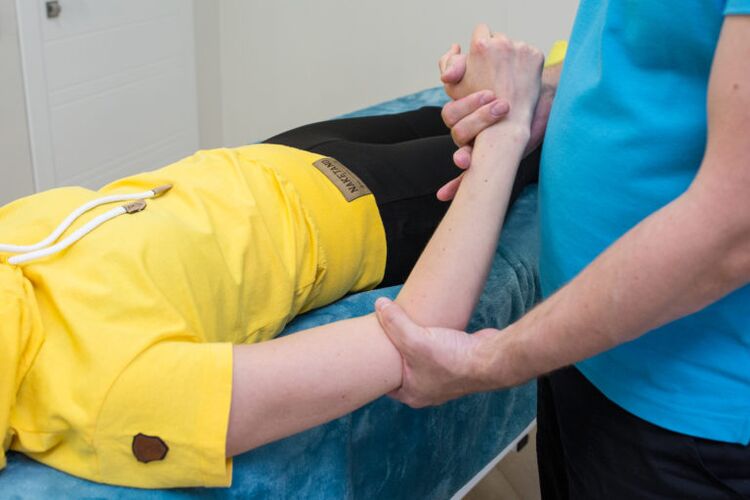
As you read the previous section, you may have noticed that all of these symptoms can be found in almost every joint pathology. Therefore, it is impossible to make an unequivocal diagnosis based solely on your ailments - you need an examination and consultation with a doctor.
When examining the patient, the doctor not only pays attention to his complaints. To make an accurate diagnosis, it is important to know when it appeared, which joint is affected, one or more of whether that lesion is symmetrical, and other factors.
Let's take a closer look at each symptom:
Pains:
It occurs in almost every pathology. Doctors distinguish several types of it:
- Flammable- increases towards morning after a period of rest. Typical of rheumatoid, juvenile, gouty arthritis, spondyloarthritis.
- Mechanically- occurs with physical exertion or a change in posture, often in the late afternoon, disappears after rest. Typical of osteoarthritis, osteoarthritis, osteochondrosis, pathology of the periarticular tissue.
- "Begin"- occurs in the first 15-20 minutes of physical activity after a period of rest. Typical of osteoarthritis.
- "Blockade"- Caused by wedging a fragment of cartilage in the joint space, causing the joint to "wedge". Can be accompanied by grinding noises. Occurs with osteoarthritis.
- constant- lasts, regardless of the load and time of day, can increase at night. Typical of osteochondropathy, osteomyelitis, tumors and tuberculosis of the bones.
Number of affected joints:
- One (monoarthritis): with juvenile, gouty, psoriatic arthritis.
- Two-four (oligoarthritis): with rheumatoid arthritis, spondyloarthritis.
- More than four (polyarthritis): in rheumatoid, gouty arthritis.
Symmetry of the lesion:
- Symmetrical: for rheumatoid arthritis.
- Asymmetrical: in spondyloarthritis, gout, osteoarthritis.
- "Migratory": with gout.
Morning stiffness in the joints:
It is perceived by the patient as impossibility and tension in movement. It happens in the morning and is associated with the accumulation of fluid in the joint cavity overnight. Typical of rheumatoid arthritis, spondyloarthritis.
The doctor also pays attention to general complaints:
- Increased body temperature;
- Reddening of the skin, the presence of a rash;
- The defeat of the internal organs.
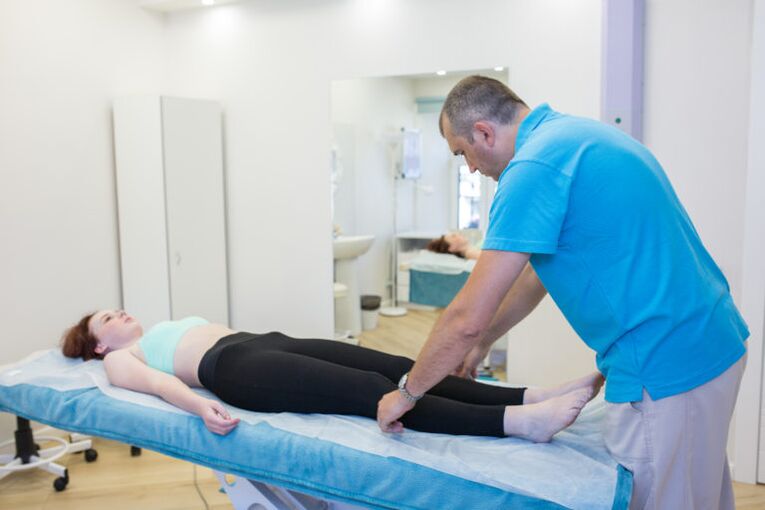
To make an accurate diagnosis, laboratory tests (blood, synovial fluid analysis) and instrumental examinations (X-ray, CT, MRI, ultrasound) are required.
diploma
Joint pain and dysfunction can have various causes. There are pathologies that cannot be treated, but many of them, with appropriate and timely treatment, allow a person to live a full life. Therefore, if you have at least one of the symptoms listed, then contact your doctor - do not self-diagnose, prescribe treatment, and most importantly, do not tolerate pain.
We take a holistic approach to treating joint pain, thanks to which many of our patients have regained the joy of movement.

























